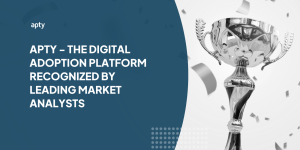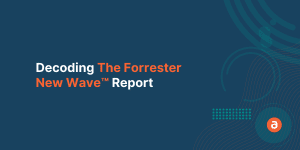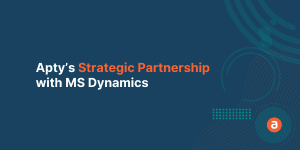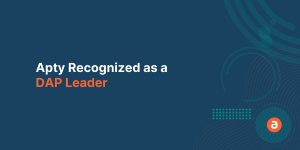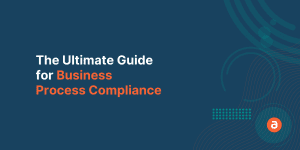The Disruptive change is the talk of the town since January of 2020. But in reality, it has been around for the last 3 decades. The only difference is that in this digital age the disruption is happening frequently which gives organizations less time to manage the change.
Managing the challenge of disruptive change could be difficult for any leader. The managers and other stakeholders must understand the capabilities they have for the change initiatives.
Based on this they must plan not only to manage the change but also to overcome the challenges that come with it.
What is Disruptive Change?
Disruptive change occurs because of innovation in industries, change in the company’s structure, or transformation in business models. These fundamental changes disrupt the way an organization conduct business.
In recent times the rate of disruptive change in business has increased exponentially. Organizations now feel that they are always undergoing change and this has brought a new culture where change is not meant for coping but to thrive.
The organizations that think otherwise has faced failed with their change efforts. According to Forbes 70% of organizations fail with their transformation efforts and eventually with change.
Whenever a change hits a business the process gets better, the revenue gets improved and the employees become efficient. If none of this happens, the business becomes invisible.
All this depends on the organizational change management model that your company opts for.
Some factors could make disruption a success or failure for your company. Knowing about it could help you to assess the situation in a better light.
Disruptive change business examples
Disruption occurs because there is a need to innovate in industries. Business leaders take part in managing disruptive change, whether it’s a change in company structure or rebuilding business models. Disruption and innovation may mean the same, but in truth, it has different effects on their respective industries.
Streaming services – Netflix and HBO Go are among the services that are in the process of disruption in the entertainment industry. They have changed the viewing experience and how the audience consumes media.
Video chatting platforms – Skype is one of the earliest video chatting platforms available. Google Teams and Zoom are now becoming popular, setting perfect examples of business disruption. With the pandemic, video chatting platforms have more users than ever.
Transportation industry – Uber revolutionized the transportation industry. It saves time, money, and the environment. The automaker companies are going to get disrupted because owning 1 or 2 cars per family won’t be necessary anymore.
How does disruptive change affect an organization?
Multiple aspects affect change in an organization. In a study conducted by Harvard Business Review, there are generally three factors that any C-suite executive must focus on.
1. Resources:
When a company has to undergo any change the biggest question that is posed to the decision-makers is “How effective is the change going to be?” While the decision-makers have to analyze multiple factors to answer that question the most important factor they have to consider is resources.

Resources such as people, technologies, equipment, applications, and cash are the major resources that determine how your other non-physical resources will perform. These non-physical resources are information, product design, brand, inter-departmental relationship, and public relations.
Resources, therefore, play a vital role in the change process. The better the resources the easier it will become to manage disruptive change in business.
2. Processes:
Processes play an equally important role when an organization faces disruption. The type of business processes in place and how effectively the organization is coping with such change using the defined processes determines the success of a business.
These business processes generally include interaction, coordination, communication, and decision-making employees.
There are formal and informal processes. The formal processes are properly documented and defined. Some processes are routine work that employees do and are categorized as informal.

The main motive behind creating a process is to attain consistency to achieve the target regularly. An organization can expect the desired results when a process is used for a defined activity but when the same process is applied in a different environment, it gives poor results.
The process that worked for a particular environment may not work for others. So, if a company implements a particular process in different departments it may work incredibly well in one while failing in another.
Another thing with processes is that success and failure usually rely on the processes that are not visible to us.
The process like manufacturing, billing, and development are visible but the process like market research that led to the breakthrough in a different segment, the financial analysis that helped the company save money, and external communication with stakeholders that help to close a sale are not visible.
These invisible processes can sometimes make or break your business during change. Mapping and tracking these processes will be helpful to take judicious decisions.
3. Value:
The third and important factor is values. Here value is not just limited to corporate values – it goes beyond that. Organizational value is a standard that consists of priorities of the employees, investors and customers.

As a company grows, its structure and business processes become complex and as a result, it becomes important for business leaders to train their employees regularly to take key decisions in line with the company’s interests and business models.
Such values of employees can propel the growth and will keep the organization on track.
How do disruptive technologies affect a business
The growth rate of modern technology is exponential and at this point, we can’t even comprehend it. Experts across the industries are betting on different technologies, we can debate at a later stage which technology is superior or right for businesses.
But the underlying fact remains, that is technology is important to survive especially in this disruptive world that is filled with uncertainties.
Even though the world we live in can be uncertain but businesses cannot. They have to invest in disruptive technologies to ensure business continuity.
The effect of disruptive technologies in the modern world is quite evident but the million-dollar question is- How they are impacting the business?
Here are 4 ways how disruptive technologies are changing the way business functions.
A. Intelligent Business Decisions
Business leaders are encountering a lot of problems, some problems can be avoided or rectified before it becomes issues. This is where AI comes to play, today most CRM and ERP applications are powered with AI which makes sense of the available data.
It provides detailed reports to the decision-makers which make their life simple and help them to avoid or eliminate any issues before it becomes severe.
B. Gain in-depth customer insights
Organizations are sitting over data mines the only challenge is they cannot uncover everything. But today because of Machine Learning organizations can at least find new trends and customer interests.
It helps them to stay ahead of their competition by solving their problems. Organizations can map their journey from website to product and even further.
C. Personalized Experience
Every user is different, when it comes to consumer-facing products like Amazon or Netflix you would have witnessed that their algorithm is strong enough to give you the right recommendations, okay not all the time but it still does its job.
This has helped companies to increase the engagement of their users and in some cases are compelling enough to turn them into paying customers.
However, not every organization has the privilege to create an in-house personalized system. This is where the Digital Adoption Platform comes in, it helps you to create personalized content for your users and grab their attention from the first interaction. The content that you can show to the users can be customized based on their interests.
Companies can use a Digital Adoption Platform to train and onboard their employees, it grabs the attention from the first interaction and only shows walkthroughs or other training content which is required for them to master the application that they use.
D. Automation of repetitive tasks
Most of the time employees do admin tasks. And let’s be very honest they are boring and are just pure waste of your employee’s time. But still, it is important for the organization as the data entered in the process help to take some crucial business calls.
Well, thanks to the conversational bots, they are helping organizations automate mundane tasks, and give time to the employees to focus on their actual job.
Conversational bots ask a series of questions to the employees and they can just answer them either through their mobile or desktop.
Which is then collated as a file and sent to the host application. This way the organization receives the information and employees need not open the application to enter the details, which saves their time.
Challenges of Disruptive Change
Disruption has become a norm and businesses in this day and age should be familiar to it. Not being able to manage any unexpected change could push you out of the business.
This is not an exaggeration – if the pandemic has taught us anything it is that “if you won’t change now then the change will push you out of business forever”.
The abrupt change in the business environment can take you by shock and trying to cope with it could waste your valuable resources. Once you know the challenges associated with sudden change, you can allocate resources effectively and with that, you will not only cope but will thrive.
a. Change the Way You Analyse Data
Analytics plays a vital role. When disruption takes place, most companies usually analyze data to identify what caused the change and based on that, take necessary actions. Then, they wait to see the results and if it gets negative, they try to figure out with the help of insights where things went wrong.

There is nothing wrong with this approach but with disruptive change taking place as frequently, such an approach could delay the transformation process.
Rather it would be better to track the changes in real-time and if it feels like the transformation process is on the verge of going out of hand, you can immediately track back and rectify the issues. Not only that, you can learn from these mistakes and could even fuel the process by making it better.
You can analyze data of any user on any web-based application using the Digital Adoption Platform(DAP) and make the product adoption process smooth amidst the chaos of transformation.
Learn How Insights are an Integral Part of DAP
b. Recognize Early Warning Signs
Sometimes businesses find it difficult to identify the signs of disruption. By the time they study data it only reinforces the fact that change has taken place.
Even if you are a leader in your industry, it is important to know what your competition is doing. You may find certain practices followed by your competitor as irrelevant.

But doing so could be a game-changer. Analyzing their business model and approach is necessary to find the advantage that they might have on you.
It is also important to keep track of your product. Learning how the customer is utilizing your product could help you to know how they interact with the product which will eventually help you to improve.
For example: If you have any web-based application then tools like Digital Adoption Platform(DAP) can help you to identify how the users are using your software and where they face issues.
When you analyze factors like these, you would be able to improve the workflow which will not only increase the software adoption rate but also the retention rate.
c. Communicate Regularly
It won’t be an exaggeration to say that communication can make or break your business. Whether it is with your employees or customers, effective communication is needed to stay on the same page.
Let’s say a multinational company has a wide range of products and they have revised the product price by seeing the disruptive change in their industry. They have only one week to execute it otherwise, it will affect their business.
The main target is to communicate about the change in price to all the officials who manage sales and accounting. The first thing leaders will do in this position is to communicate via email about the price change.

While email is a great way of communicating, the open rate is as low as 30%. A company can overcome this communication challenge either by calling each of their employees or by announcing about the change with in the application.
If you are a multinational company then calling is a tedious job. The in-app announcement feature of a DAP is one of the most efficient ways to communicate change.
In our example, the change in prices can be communicated via an in-app announcement as it will pop-up the notification when the user will open the Billing application for the first time in a day. The same message can be announced in other relevant applications like CRM which most of the sales personnel use.
You can push this notification within the application for as long as you want.
This way both the accounting and sales teams will be on the same page without any miscommunication. Also, the finances of the company will not be affected.
d. Train as You Change
Well, you might map the change and could manage the disruption for a while but you won’t sustain unless you have immediate tools to train your employees.
Of course, online training, classroom training, and interactive training via simulation and VR are great ways but when disruptive change happens it would be difficult to allocate resources to create courses.
Even if you somehow pull this off, expecting your employees to be productive with their job from day one is unfair and practically impossible.

The ideal way would be to use an in-app guidance tool that can guide your employees from one step to another and train them on the job.
Employees can access relevant videos and documentation as and when they want within the application they use. Further, these in-app guidance tools are called the Modern Digital Adoption Platform which can be customized for each job function.
They also help the Learning and Development department to identify what type of training is working and how effective the employees post the training efforts. Based on the insights you can alter the training method or process.
If an organization ignores the modern training methods then the adoption to change would be delayed which as a result could adversely impact your business and things will get worse if training is not given on priority during the change process. Training post the change is not a wise choice – change process and training should go hand-in-hand.
Overcome the Challenge of Disruptive Change with Apty
By now we understand the challenge of disruptive change and how a Digital Adoption Platform is the right fit. However, the scope of a Digital Adoption Platform is not limited to on-screen guidance, rather it begins there and helps the organization to understand the complete state of its tech-stack adoption.
From supporting your employees on a new application to providing detailed usage insights, a Digital Adoption Platform does it all.
Apty is one of the few Digital Adoption Platforms that ensures that your employees use the application to the fullest potential and engage with the application in a way that is beneficial for both employees and the organization.

